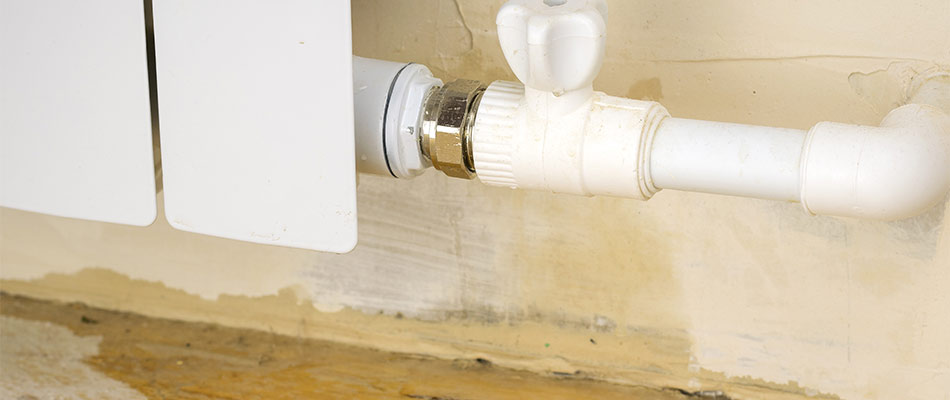Exposing Hidden Water Line Leaks: Six Useful Finding Methods
Exposing Hidden Water Line Leaks: Six Useful Finding Methods
Blog Article
On this page down the page you will find a bunch of superb resources in regards to Locating water leaks.

Early detection of dripping water lines can reduce a potential disaster. Some little water leakages might not be visible.
1. Analyze the Water Meter
Every residence has a water meter. Checking it is a guaranteed manner in which helps you uncover leakages. For beginners, shut off all the water sources. Make sure no one will certainly purge, make use of the faucet, shower, run the cleaning device or dishwasher. From there, most likely to the meter and also watch if it will alter. Because nobody is utilizing it, there must be no motions. That suggests a fast-moving leakage if it relocates. Furthermore, if you spot no changes, wait a hr or 2 and check back again. This means you might have a slow-moving leak that can even be underground.
2. Examine Water Intake
Evaluate your water bills and track your water intake. As the one paying it, you need to notice if there are any type of discrepancies. If you identify sudden changes, in spite of your consumption coinciding, it implies that you have leakages in your plumbing system. Bear in mind, your water costs must fall under the very same range every month. A sudden spike in your expense suggests a fast-moving leak.
A consistent rise every month, also with the very same behaviors, reveals you have a slow-moving leakage that's additionally gradually escalating. Call a plumber to completely inspect your home, especially if you really feel a cozy area on your floor with piping underneath.
3. Do a Food Coloring Examination
When it pertains to water consumption, 30% comes from commodes. Examination to see if they are running properly. Decline flecks of food shade in the storage tank and wait 10 mins. There's a leakage between the container as well as bowl if the color somehow infiltrates your bowl throughout that time without flushing.
4. Asses Outside Lines
Don't forget to check your exterior water lines also. Should water seep out of the connection, you have a loose rubber gasket. One small leakage can throw away heaps of water as well as surge your water expense.
5. Analyze the situation and check
Home owners need to make it a behavior to inspect under the sink counters and also even inside cupboards for any kind of bad odor or mold development. These 2 warnings indicate a leak so timely interest is called for. Doing regular evaluations, also bi-annually, can save you from a major trouble.
Examine for stainings as well as damaging as many pipelines and also appliances have a life expectations. If you suspect leaking water lines in your plumbing system, don't wait for it to escalate.
Early detection of dripping water lines can alleviate a potential calamity. Some small water leakages may not be visible. Inspecting it is a proven way that helps you discover leakages. One small leakage can waste lots of water as well as increase your water expense.
If you believe leaking water lines in your plumbing system, do not wait for it to intensify.
How to Know If Your Home Has a Hidden Leak
Water Meter Reveals Inexplicable Water Usage
If you’d like to test whether or not there’s a leak somewhere in your home, you can do this using your water meter. Here is how to conduct the test:
Don’t use any water in your home for at least 30 minutes; this also means not turning on faucets or water-using appliances.
Go outside, and check your water meter for activity.
If your water meter shows that there was activity, even though no one was using any water, this proves that there is a leak in your home.Visible Mold or Mildew Growth
Leaks behind walls create moist, dark environments that allow mold and mildew to grow and thrive. Eventually, you might see mold growth forming on the wall closest to a hidden leak.
If mold is growing in an area that receives a high amount of moisture, such as a bathroom, it may simply be an indication that better ventilation is needed. However, if you see mold growth on a wall or the ceiling in an area where you would not expect, you probably have a hidden leak.
Musty, Mildew Odor
Sometimes you might not be able to see the mold or mildew that is growing as a result of a leak. However, the smell can give the problem away just as easily. If you catch a whiff of something musty, there’s a good chance that old water is collecting somewhere in your home that you can’t see.
Stained/Warped Walls, Ceilings, or Floors
When your home soaks up water, a variety of red flags can become visible, including ceiling stains, bubbling drywall, warped walls, and sagging floors. While these issues can be caused by excess humidity, they can also be signs that a pipe or plumbing connection has started leaking behind your walls.
Inexplicably High Water Bill
After a while, you get a general sense for what your water bill should be. If you own a pool or sprinkler system, your bill will tend to be higher during summer. However, if you receive a water bill that seems especially high, and you can’t figure out what caused it, then you may have a hidden leak somewhere that’s increasing your bill.
https://www.plumbingjoint.com/blog/2019/july/how-to-know-if-your-home-has-a-hidden-leak/

Hopefully you liked our section on Detecting hidden plumbing leaks. Thank you for finding the time to read our piece. Remember to take the time to share this entry if you enjoyed reading it. Thank you for your time invested reading it.
Plumbing SOS? Reach out! Report this page